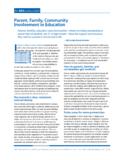Transcription of Policy Brief August 2016 What to Cut - Rio Grande …
1 Policy Brief August 2016 . what to Cut Solutions to New Mexico's Budget Crisis By Paul Gessing and D. Dowd Muska Introduction New Mexico's underperforming economy, outsized government, and years of overspending have caught up with the Land of Enchantment. Long-term expenditure trends, combined with low prices for oil and natural gas, have put New Mexico's fiscal health in jeopardy. According to one account, the state's budget deficit for the fiscal year that ended June 30 is $150. million. In the current fiscal year, the gap between revenue and expenditures could be as much as $500 Much of the budget crisis can be traced to surging Medicaid enrollment.
2 The federal-state healthcare program for the poor has grown by 216,600 due to its Obamacare-enabled expansion. Total enrollment is expected to reach an astonishing 900,000 by 2020 a figure that approaches half the state's population. 2 According to the Legislative Finance Committee, New Mexico will spend more than $ billion in general-fund revenue on Medicaid during the 2020. fiscal year. 3. Additional threats to New Mexico's fiscal health include oil-and-gas prices continuing to remain low, a hydrocarbon-production decline as active drilling rigs have fallen to 13 from 53, higher rates for payment of tax credits, and subpar job and income growth.
3 4. 1. Another 9-Figure Shortfall Requires a Special Session, Albuquerque Journal (editorial), July 26, 2016 , 2. Susan Montoya Bryan, New Mexico Among States where Medicaid Enrollment Surges, Albuquerque Journal, July 19, 2015, 3. Ibid. 4. David Abbey, General Fund Revenue and Economic Update, Legislative Finance Committee, New Mexico Legislature, March 21, 2016 , % Raising taxes is always an attractive solution for many policymakers, but making New Mexico even less economically competitive would be a serious mistake. The state already suffers from one of the worst jobless rates in the nation.
4 5 The employment-to-population ratio is disturbingly low. 6 Prospects for an immediate economic rebound, and the growth in tax revenue that would result from such an expansion, appear slim. With neighbors such as Texas, Arizona, and Utah offering lower and simpler tax burdens, lighter regulations, and right-to-work laws, there's little chance that the state will soon draw a large influx of entrepreneurs and investors. To her credit, Governor Susana Martinez has reiterated her opposition to raising taxes on hard- working New Mexicans. According to administration spokesman Chris Sanchez, The governor does not believe raising taxes on families and businesses is the right way to respond to this oil and gas price crash.
5 7. New Mexico's budget should be balanced not with tax hikes, but through intelligent cuts . reductions that restore state government to its proper role and ask more of its public employees. Fortunately, opportunities abound to make New Mexico's budget smarter. Despite the Great Recession and a very weak recovery, policymakers in Santa Fe have made no serious efforts to right-size state spending. As the chart below indicates, in the dozen fiscal years between 2003. and 2015, New Mexico's total expenditures, adjusted for inflation, rose by percent.
6 In contrast, population growth was just percent. Sources: Comprehensive Annual Financial Reports, State of New Mexico, various years;. inflation adjustments made via online calculator of the Federal Reserve Bank of Minneapolis Comparing New Mexico's spending to its neighbors, it is clear that there are ample areas to economize. With annual spending of $8,197 per capita in 2015, the Land of Enchantment spends considerably more than Colorado, Oklahoma, Arizona, Utah, and Texas. 5. Unemployment Rates for States, Local Area Unemployment Statistics, Bureau of Labor Statistics.
7 6. Jeff Chapman and Julie Srey, Employment Rates Creep Closer to Pre-Recession Levels, Pew Research Center, March 1, 2016 . 7. Dan Boyd, Governor repeats no tax-increase pledge, Albuquerque Journal, August 2, 2016 , 2. Source: Ballotpedia analysis of National Association of State Budget Officers, State Expenditure Report: 2013-2015, ; United States Census Bureau, State and County QuickFacts . Herewith, the Rio Grande Foundation outlines its suggestions for more than $600 million in cuts to New Mexico's annual expenditures. All estimates are based on general-fund appropriations for the 2017 fiscal year.
8 In addition to implementing these reductions, legislators and the governor should explore the privatization of state assets and entities that do not belong in government's hands, and thoroughly investigate the potential revenue benefits of a Colorado- style legalization of marijuana for recreational use. Primary and Secondary Schools: $252 million The state equalization grant (SEG), administered by the New Mexico Public Education Department, is an attempt to ensure that every public school in the state receives a fair share of a statewide pool of education dollars.
9 8 In the 2017 fiscal year, the SEG is slated to distribute $ billion to school districts. 9 Thus, a 10 percent cut to the disbursements would yield $252. million in savings. Teacher unions and other members of the education establishment are sure to argue that New Mexico's K-12 government schools cannot bear a 10 percent cut in SEG funding. But consider the per pupil expenses of the state's neighbors. At $9,012, New Mexico spends more than Utah ($6,555), Arizona, ($7,208), Oklahoma ($7,672), Texas ($8,299), and Colorado ($8,647). 10. New Mexico's government schools generate a poor return on this considerable investment.
10 A. 2015 analysis ranked the state above only Nevada and Mississippi on the list of America's worst 8. Finance Facts, Legislative Finance Committee, New Mexico Legislature, July 2013, % 9. 2016 Post-Session Review, Report of the Legislative Finance Committee to the Fifty-Second Legislature, Second Session, March 2016 . 10. Public Education Finances: 2013, Educational Finance Branch, Census Bureau, June 2015. 3. school systems, noting that the four-year high school graduation rate was less than 74. percent in 2012, below the national graduation rate of 81 percent.


